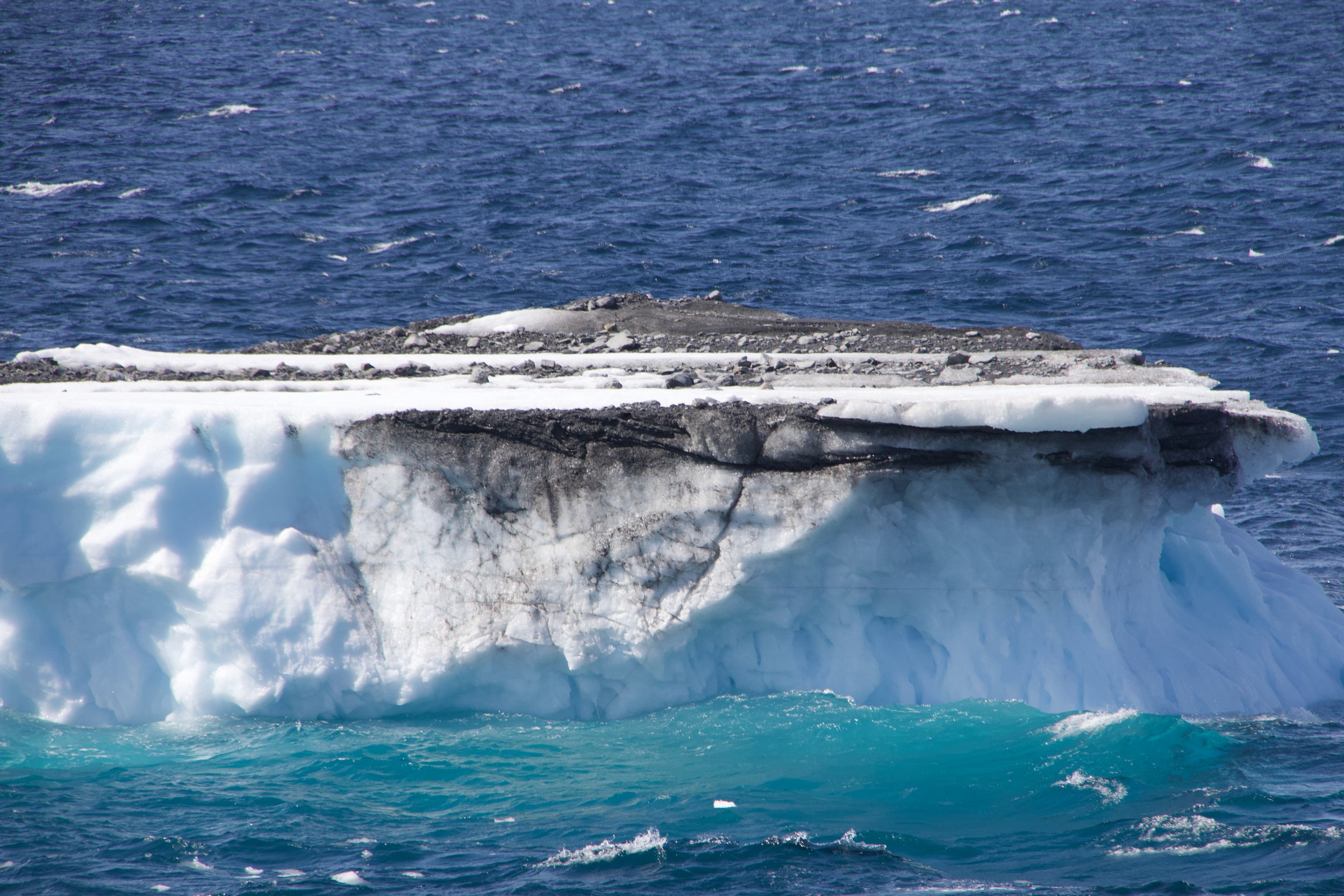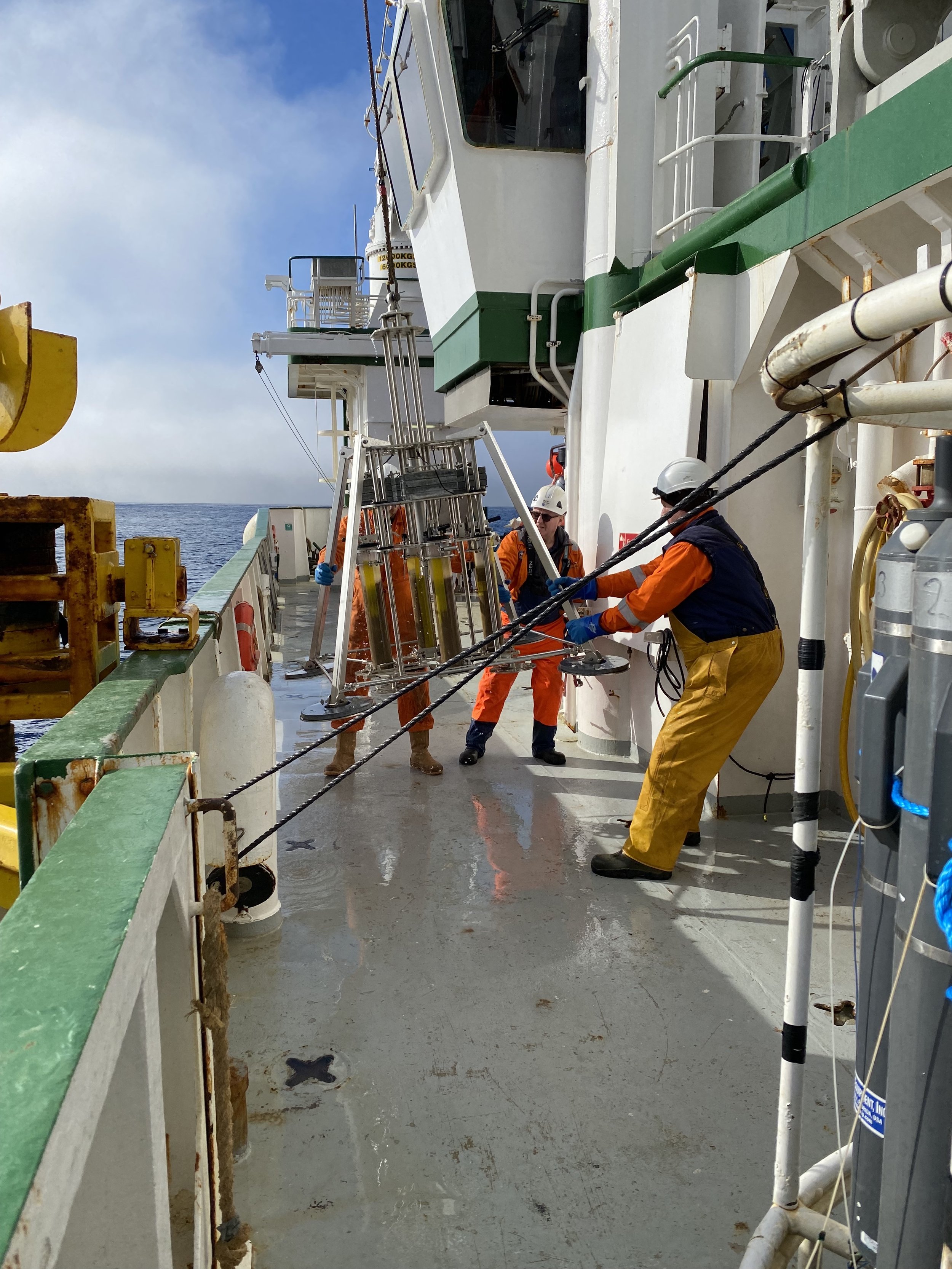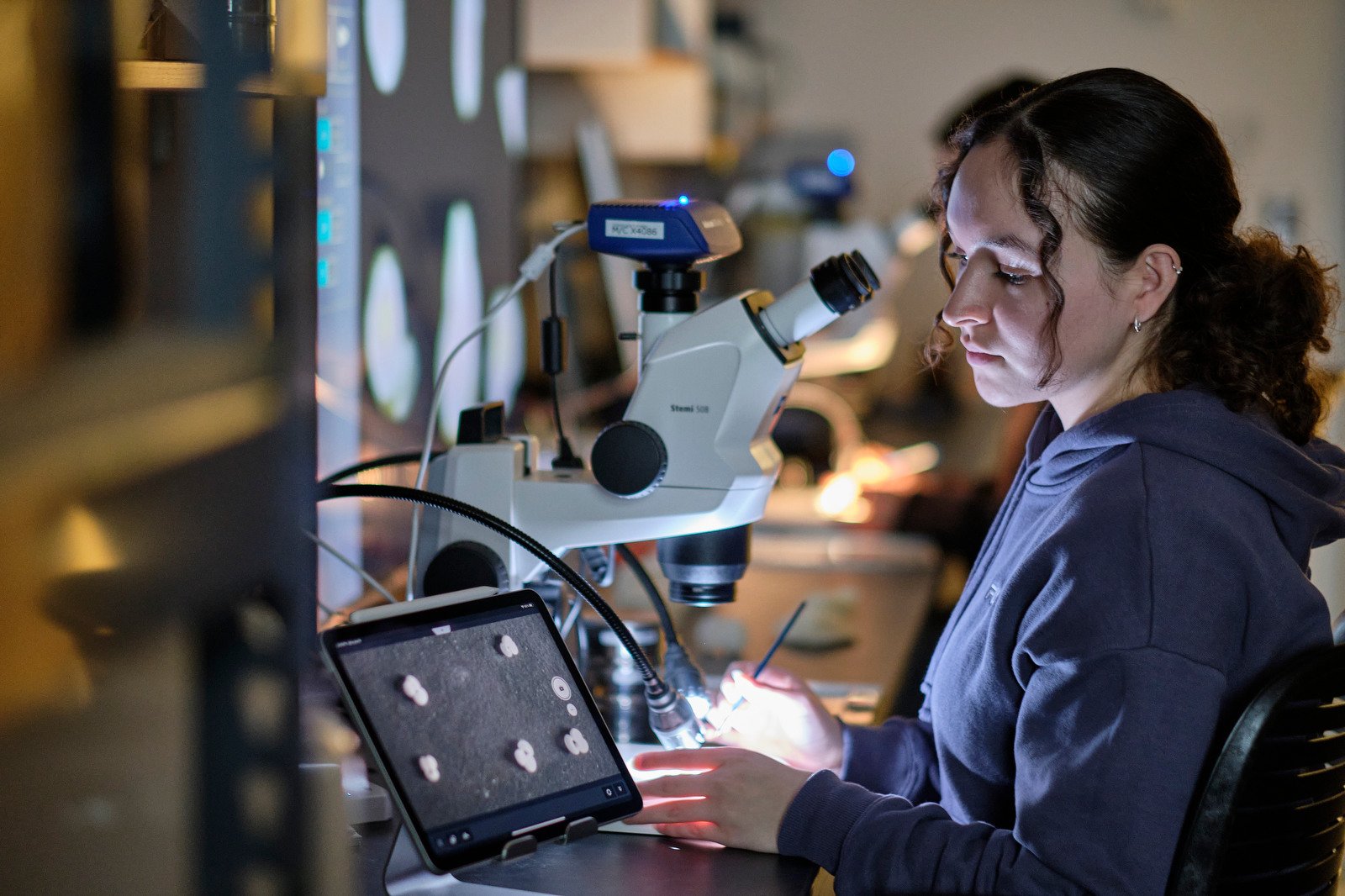Greetings from the RV Celtic Explorer! A crew of 18 scientists (including Dr. Allison Jacobel, Ashley Rodriguez, and myself) has set sail from the charming Irish town of Killybegs to partake in the SiTrAc (Signal Tracking to unveil Arctic Climate variability) expedition under the leadership of Dr. Audrey Morley. Although this research cruise has many goals and objectives, I’ll only mention my favorite: “to assess modern and past deep water mass exchanges between the Arctic and Nordic Seas, which are crucial contributors to dynamical heat transport by the ocean and play an important role in setting the climate in the circum-North-Atlantic region.” My name is Apollonia and I’m a first-year paleoceanography graduate student at Columbia University’s Lamont-Doherty Earth Observatory fascinated by the role of ocean circulation in abrupt climate change, so this is very exciting work to be involved in!
One of our key roles in the wet lab is processing the marine sediment core samples taken at each station. We’re collecting sediments using two different methods: gravity cores and multi cores. Multi cores are taken by a device that holds an array of four tubes, each a little shorter than a meter in length (see picture). This device, called a multi corer, is utilized to collect four bottom water samples (the water directly overlying the sediment), undisturbed sediment samples (the most recently deposited layers of sediment), and pore water samples (water contained in the pore space of these sediments).
Once the cores are collected and safely in the wet lab, the dirty work begins (my favorite part)! We place the cores on a multi core slicer, a device used to help us extrude the sediment in portions 0.5 cm in length. Every full turn of the slicer pushes one centimeter of sediment above the neck of the tube and allows us to use two metal spatulas to slice and scrape the sediment precisely—I kind of feel like one of those people who prepare the overpriced rolled ice cream. We then place our mud samples in tiny sample bags and store them in a freezer onboard to preserve them for other scientists (like me!) to analyze in the future.
Not only is this my first time on a research cruise, but it’s also my first time dealing with fresh marine sediment cores. Let me tell you—there’s quite a difference! There’s the obvious difference in water content, of course. But there are also certain features you can observe in a fresh core that you can’t in freeze-dried samples. Processing a fresh core is an experience for the senses! The first I noticed was the smell—some parts of the core smell like what you’d expect mud to. Then, suddenly, you’ll slice into a layer releasing a pungent sulfurous scent! Although somewhat unpleasant, this lovely smell can tell you about what’s happening in your sample. You just can’t get this fabulous experience, or sedimentological information, by looking at freeze-dried samples. I am glad to have experienced what fresh samples look, feel, and smell like because it is a reminder that you don’t always get the full picture by looking at processed samples. Of course, the bulk and trace element chemistry of the samples is revealed by analytical methods—not the qualitative observations I mentioned (more on that soon). Even so, as geologists studying an incredibly thin outcrop (our sediment core) it helps to gather as much information as possible to unearth a fuller story. A wise man once told me, “the best geologist is the one who looks at the most outcrops.” Because of this, I am happy to have seen the cores we’ve collected so far—and I’m ready for more!


















